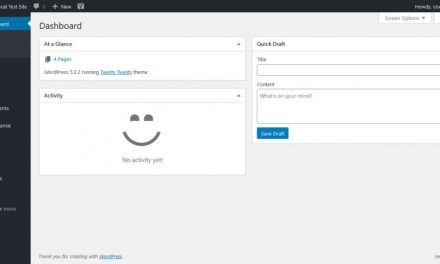The REST API is a universal exchange language that every website and application can use to communicate. It allows you to obtain data from remote sources, e.g., third-party apps, using the so-called HTTP commands – GET, POST, PUT, and DELETE. REST API is flexible software because it returns data in various formats. However, WP REST API sends and receives data in the JSON format only.
Web developers highly value it since it requires no additional protocols to function correctly. WordPress REST API is an autonomous system, which is just good on its own as it can be. But as with anything, the REST API can be made better with plugins. In today’s article, I’ll be reviewing several REST API plugins for WordPress, trying to find out if they are worth a shot. I’ll go over their functionality – that’s the best way to learn which additional tasks they can accomplish.
Ultimate Endpoints With REST API by Dipankar Pal
Ultimate Endpoints is a WP REST API plugin that allows adding custom endpoints, aka routes, to the WordPress REST API. You can do it through a convenient settings panel and then manage the API requests and responses. Its UI delivers a non-compromised experience.
API creation here takes a few seconds. You need to generate a Secret Key that will be used for authentication purposes and then create a custom Endpoint URL in the corresponding tab. No fluff. You can further use this newly-hatched endpoint to send requests to the server and obtain any necessary data.
You can attach a custom code to the Filter Hook provided by Ultimate Endpoints to level it up. Firstly, it makes the API operative; secondly, it allows you to receive all request parameters.
Key Functionalities
- Secret Key creation/deactivation
As mentioned previously, secret keys are meant to call the custom endpoint URL. By default, the plugin provides a ROOT private key. The complete list of keys is located in the Secret List tab. Deactivate the key if needed – this will simplify the data delivery upon request.
- Endpoint URL creation
The Ultimate Endpoints plugin registers a new route instantly with parameters you define in the Endpoint URLs tab. This endpoint URL delivers a “Connection OK” response when clicked, which means you get a workable route in less than 10 seconds.
- API Request/Response Log keeping and deleting
You can see the records of all requests and responses in the Log tab. This feature is optional and can be deactivated in the settings panel. In this way, the system will not be capturing the API history.
- Recent Activity recording
As a website admin, you can set the number of days to keep track of the recent activity (up to 6 days). The plugin records every little thing related to custom endpoints you’ve created.
JetEngine REST API by Crocoblock
REST API & Custom Endpoints is a complex JetEngine feature deemed a decent alternative to a fully functional WordPress REST API plugin. It allows managing custom endpoints through the four most popular API methods like GET, POST, PUT, and DELETE. Thanks to it, you can create connections between website A and website B, form and website, app and website, as well as third-party API and website.
When it comes to functionality, JetEngine REST API is second to none. It allows you to manage data remotely and fetch it to the front-end quickly and efficiently.
Key Functionalities
- REST API Endpoints for the Custom Content Type
This functionality allows you to create custom tables with any structure right in the admin panel and then fetch and edit data from these database tables using the REST API endpoints.
- REST API Listings
With this feature, you can obtain a list of any data from a third-party REST API, output this listing on any page of your website, and adjust the looks of the listing items in the visual editor (Elementor and Gutenberg).
- REST API Request notifications for Forms
To see this functionality in action, choose the “REST API” notification type in the form settings. It makes the form on your website send requests to any given third-party API – just set it up in the admin panel.
WP REST API Controller by YIKES, Inc.
It’s a free WP REST API plugin that permits website administrators to manage CPT and taxonomy visibility through a handy UI. Thanks to WP REST API Controller, you can expose the CPT and taxonomy data to REST API and customize endpoints through which the data will be transmitted. It is possible to edit the Endpoint URL and alter initial meta key names.
Alternatively, this plugin allows you to enable/disable API responses visibility and customize metadata assigned to it.
Key Functionalities
- Make CPTs accessible/inaccessible to REST API;
- Enable/disable CPT and taxonomy API endpoints;
- Manage the CPT/taxonomy metadata by adding or deleting meta fields from API requests;
- Edit endpoint names for default and custom post types;
- Make metadata properties in REST API requests more user-friendly by renaming them;
- Monitor and manage data and post types created by 3rd party themes and plugins;
- Include various filters to modify default functionality;
- Code-free control over API responses.
REST API Toolbox by Pete Nelson
Another free WordPress REST API plugin that allows you to alter multiple REST API settings. It’s super easy to install the REST API Toolbox and start using it. It’s a go-go way for those who don’t use REST API yet or those willing to protect their data from unauthorized access. With this plugin, you can define the authentication methods and permissions to access each REST API endpoint: no authentication required, access by authentication only, or unavailable all along. In this way, safe and non-compromised REST API usage is ensured.
Key Functionalities
- Disable REST API and JSONP Support;
- Assign custom prefix to REST API;
- Remove WP core endpoints and require authentication for them;
- Remove Custom Post Type endpoints and require authentication for them;
- Force SSL;
- Support for WP-CLI commands (wp rest-api-toolbox).
Bottom Line
No doubt, WP REST API is a complex system with a lot of internal and external correlations. Its functionality is performing well “as is,” though there’s always room for improvement. Given this, I spot the emergence of various REST API plugins for WordPress, which can tweak the default functionality, extend or even disable it. While some plugins can make minor changes to the WP REST API core (like adding a custom prefix), the others make CPT, taxonomy, and API response data invisible to third parties. There is add-on software to record the activity log and track down custom responses and API requests.
Last but not least, some plugins can help you visualize REST API data in a grid and collect form data from different sources to a pre-defined endpoint URL.











